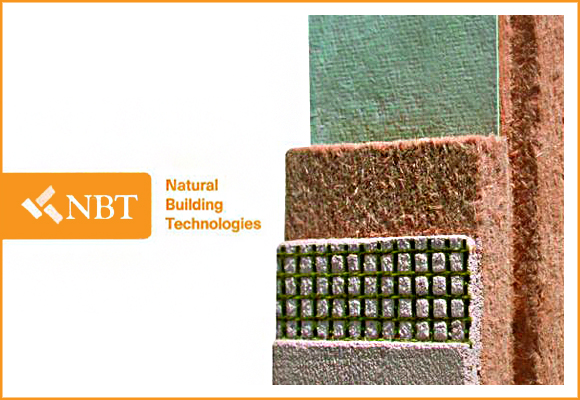
Board Options for Clayworks Plasters
GUEST BLOG
By Matthew Wellesley Smith, Natural Building Technologies.
There are various options for backing boards for clay plaster, all of which are quicker, less costly and more practical to install than lathe. They provide ecological alternatives to plasterboard that complement the way the clay plaster deals with moisture.
The use of a backing board provides the opportunity to introduce insulation in the form of woodfibre boards (Options 2 &3). This is especially beneficial for solid masonry walls with poor thermal performance.
The use of clay and woodfibre products in general can have a positive influence on internal conditions by regulating temperature, absorbing moisture and odours and insulating against sound transfer.
1. Clay Board
The high density of the boards means that they provide excellent resistance to sound while absorbing internal humidity through the plaster and helping to protect vulnerable buildings from excess moisture generated by modern living. They are ideal on timber stud partition walls to add thermal inertia and acoustic insulation.
Clay boards are comprised of two layers of red matt at right angles within a clay sand mix, with a hessian skin embedded in the surface on both sides.
A clay plaster skim can be directly applied to the boards following joint filling and reinforcement.
2. Pavaroom Woodfibre Board
A lightweight, insulating (0.044W/m2K) alternative to clay boards, suitable for application on all substrates including ceilings, timber stud walls, and solid masonry (bonded to substrate according to NBT guidance). Ideal where insulation is required, and a crisp, modern finish is preferred.
A primer with aggregate is painted on the cellulose surface prior to application of the clay plaster skim.
Pavadentro Woodfibre Board
Flexible enough to follow gentle wall contours, Pavadentro is an insulation (0.043W/m2K) board for solid masonry that can be shaped and sanded where a softer, more traditional finish is preferred.
A plaster build-up of 9-12mm including a layer of reinforcing mesh is required, directly applied to the boards. An alternative board (Pavatherm Combi) is used for timber frames with the same finish.

